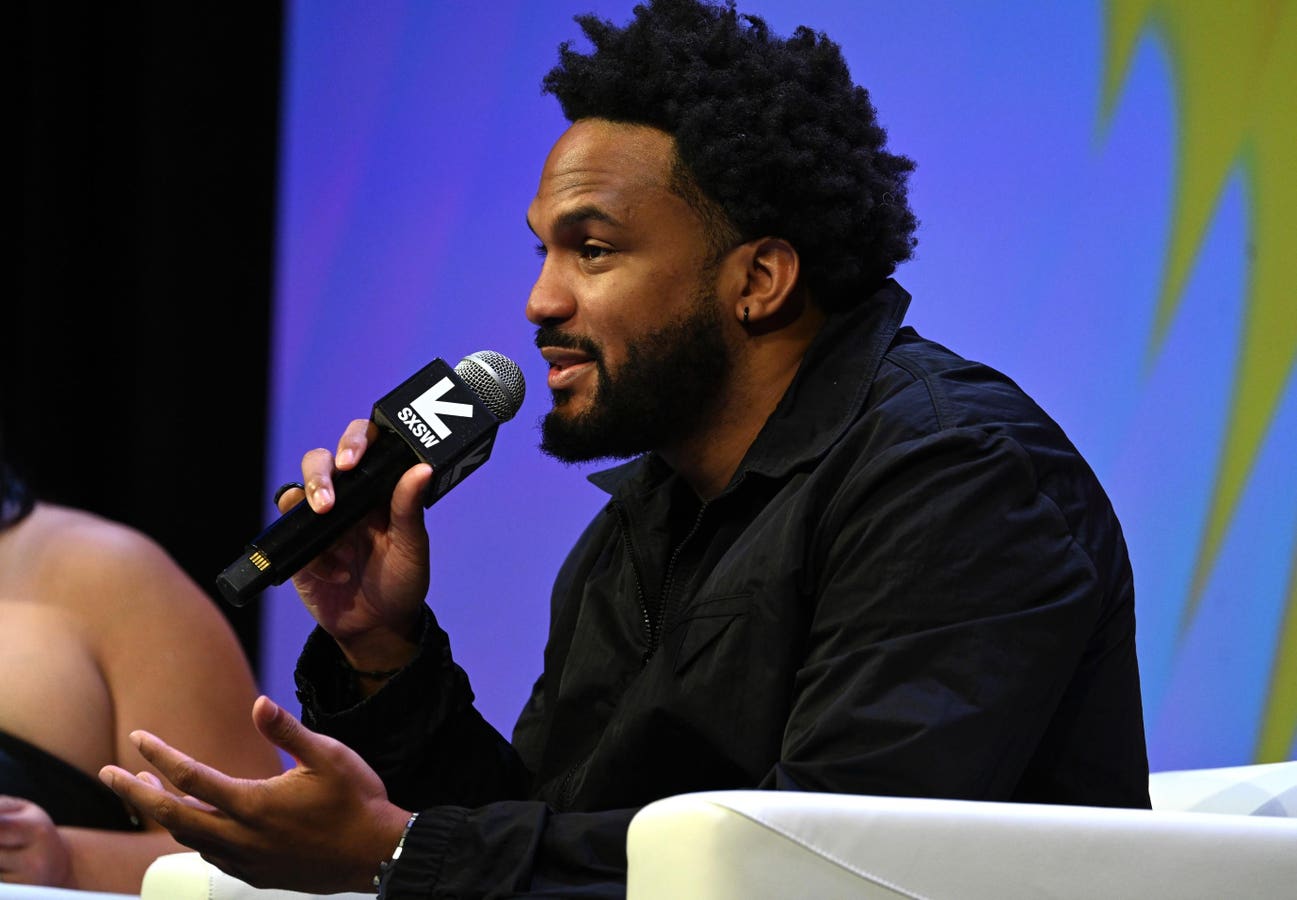Strategic Leadership
The Future of Coaching: Trends and Predictions for the Evolution of Executive Coaching

Executive Coaching Insights
The world of executive coaching is undergoing a significant transformation. With the rise of digital technologies, shifting workforce demographics, and increasing demands for personal and professional development, the role of executive coaches is changing. In this article, we’ll explore the trends and predictions shaping the future of executive coaching, and what it means for organizations and individuals seeking growth and success.
The Rise of Digital Coaching
The COVID-19 pandemic accelerated the adoption of digital coaching platforms, making it easier for clients to access coaching services remotely. This trend is expected to continue, with more coaches and coaching firms investing in digital tools and platforms to enhance their services. This shift will lead to increased flexibility, accessibility, and cost-effectiveness for clients, as well as increased opportunities for coaches to reach a broader audience.
Advantages of Digital Coaching
* Increased accessibility and flexibility for clients
* Reduced costs for clients and coaches
* Scalability and reach for coaches
* Enhanced data analysis and insights for personalized coaching
The Growing Importance of Artificial Intelligence (AI) in Coaching
AI-powered coaching tools are becoming increasingly popular, helping coaches to analyze data, identify patterns, and provide more personalized support to clients. AI can assist in areas such as:
AI-Powered Coaching Applications
* Personality assessments and trait analysis
* Emotional intelligence and emotional regulation
* Career development and job matching
* Goal setting and objective tracking
The Rise of Specialized Coaching Niches
As the demand for coaching services continues to grow, coaches are specializing in specific areas, such as:
Specialized Coaching Niches
* Executive coaching
* Leadership coaching
* Career coaching
* Life coaching
* Wellness coaching
* Diversity and inclusion coaching
The Growing Emphasis on Diversity, Equity, and Inclusion (DEI) in Coaching
Coaches are recognizing the importance of incorporating DEI principles into their practice, recognizing that individual differences can lead to unique strengths and opportunities. This shift is driven by:
DEI in Coaching
* Increased awareness of systemic inequality and bias
* Growing demand for diverse representation and inclusion
* Need for coaches to address intersectional concerns and challenges
* Importance of cultural competence and humility in coaching
The Evolution of Coaching for the Modern Workforce
The modern workforce is marked by:
Changes in the Modern Workforce
* Shift towards remote work and flexible arrangements
* Increased importance of continuous learning and development
* Growing emphasis on well-being and mental health
* Diverse and global teams with varying needs and expectations
Conclusion
The future of executive coaching is shaped by technological advancements, shifting workforce demographics, and increasing demands for personal and professional development. As the industry continues to evolve, coaches must adapt to these changes by incorporating digital tools, AI-powered applications, and specialized niches into their practice. By doing so, they can provide more effective support to clients, addressing their unique needs and challenges in the modern workplace.
FAQs
Q: What are the benefits of digital coaching?
A: Digital coaching offers increased accessibility, flexibility, and cost-effectiveness, as well as enhanced data analysis and personalized support.
Q: How can AI-powered coaching tools aid in coaching?
A: AI can assist in data analysis, pattern recognition, and personalized support, making coaching more effective and efficient.
Q: What are some emerging niches in executive coaching?
A: Some emerging niches include diversity and inclusion coaching, wellness coaching, and career coaching, among others.
Q: How can coaches incorporate DEI principles into their practice?
A: Coaches can prioritize cultural competence, address intersectional challenges, and recognize individual differences to provide more inclusive and effective support.
Q: What are the key changes in the modern workforce?
A: The modern workforce is characterized by remote work, continuous learning, increased focus on well-being, and diverse teams with varying needs and expectations.
Strategic Leadership
Leading Through Uncertainty: Why Clarity Is a Strategic Advantage

In 2025, one of the most important traits a leader can have isn’t a fancy title, an Ivy League degree, or a decade of experience—it’s clarity.
We’re in a time where change is constant. Economic shifts, workplace restructuring, AI disruptions, and global challenges are forcing leaders to make quick decisions under pressure. But here’s the truth: people don’t expect you to have all the answers. They just want to know where they stand.
Clarity isn’t about having it all figured out—it’s about leading with intention, honesty, and direction, even when things are unclear.
What Clarity Looks Like in Real Leadership
Clarity means being upfront about what’s happening and why it matters. It means setting expectations, not assumptions. And most importantly, it means communicating with empathy—not just urgency.
Here are a few real-world examples:
-
Instead of “We’ll see what happens,” say “Here’s what we know right now, and here’s how we’re preparing.”
-
Instead of avoiding tough conversations, address uncertainty head-on and offer reassurance through transparency.
-
Instead of making decisions in a vacuum, involve your team in the thought process so they feel part of the solution.
Why It Matters More Than Ever
In times of uncertainty, people look to leadership for a sense of stability—even if that stability is just knowing what to expect for the week ahead. Lack of communication doesn’t feel neutral. It feels like something is wrong. That silence? It leaves space for fear, assumptions, and disengagement.
Clarity, on the other hand, creates trust.
When teams feel informed and guided, they’re more engaged, more resilient, and more likely to step up. They don’t need perfection. They need presence.
How Leaders Can Start Practicing Strategic Clarity
-
Repeat the vision—often. People forget. Remind them why the work matters.
-
Simplify your message. Clarity beats cleverness every time.
-
Ask questions. Make sure your team understands the goals, their roles, and the next steps.
-
Stay human. Empathy is a leadership superpower. Use it.
Final Thoughts
Strategic leadership in 2025 isn’t about having all the answers. It’s about being clear, even when the path ahead is still unfolding.
You don’t have to predict the future. But you do need to help your team move forward with purpose, confidence, and trust.
And that starts with one simple question:
What do my people need to hear from me today to feel secure and seen?
Start there—and you’re already leading.
Strategic Leadership
Everette Taylor’s Unconventional Path to Leadership

When Everette Taylor was named CEO of Kickstarter in 2022, it marked a historic milestone—not just for the pioneering crowdfunding platform, but for the tech industry, where Black leadership at the highest levels remains rare. At the time of his appointment, Taylor became one of only a handful of Black CEOs leading a global tech company—breaking barriers in a space that has long struggled with representation. Taylor wasn’t just making noise. He was making impact.
The Journey to the Top
In a candid video conversation with Forbes, Taylor spoke about that journey—from the margins to the main stage—and how his unconventional rise continues to shape his leadership and Kickstarter’s comeback. Raised by a single mother on the South Side of Richmond, Virginia, he dropped out of college—twice. He slept in his car, cold-called his way into rooms where no one expected to see him, and launched his first startup at 19.
Early Life and Career
That early boldness set the tone for a career defined by risk-taking, reinvention, and relentless drive. Without pedigree or privilege, Taylor forged his own leadership style—one that blends creative vision, market instinct, and a deep understanding of culture. His big break came when tech veteran Mike Steib took a chance on him at Artsy, naming Taylor CMO at 29. “Mike taught me what it meant to be a CEO,” Taylor says. “Everything is your responsibility. No excuses.”
Turning Around Kickstarter
By the time he took the helm, Kickstarter’s shine was starting to dim. Though still the leader in its space, “revenue was declining, competitors were gaining ground, and the company’s cultural relevance had started to fade. We weren’t operating at the level we needed to be,” Taylor recalls. To reignite Kickstarter’s influence as a vital player in a rapidly evolving digital ecosystem, Taylor made a bold bet on the creator economy. “I didn’t just want to be a leader in crowdfunding,” he says. “I wanted Kickstarter to be a leader in the creator economy.”
Focusing on Creator Education
Since Taylor joined as CEO, creator education has become a central focus at Kickstarter, and over the past year alone, Kickstarter has rolled out dozens of new product features designed to support creators not just at launch, but to help them sustain, scale, and thrive throughout the full lifecycle of their projects. It’s a vision that’s already showing results, as the company returned to consistent year-over-year revenue growth. “Project success rates on the platform have climbed from around 50% to 65%,” he says. “That matters more to me than revenue or any other metric because our mission is to help bring creative projects to life—and that starts with giving creators the tools, support, and education they need to succeed.”
Cultural Transformation
But the transformation hasn’t stopped at product innovation. Taylor also reimagined the company’s internal culture to reflect the diversity of the global creative community it serves. “Inclusivity was mission-critical,” he says. “It started internally—with our team. My CMO is a Black woman. My head of content is a man of color. Our head of social is a woman of color. We built a team that looks like the world we serve.” With that diverse leadership team in place, together they revamped outreach and education, expanded funding initiatives, and positioned Kickstarter not just as a launchpad, but as infrastructure for creators of all kinds.
Personal Mission
“For me, this work is personal,” Taylor says. “I know what it’s like to fight for an opportunity. I know what it means to have someone believe in you. That’s what we’re building at Kickstarter—a place where creators don’t just launch projects, they build movements.” Two years since Taylor first stepped into the top role at Kickstarter, now 35, he remains an anomaly in the tech C-suite. But he’s determined not to be the last. “There are so many incredible Black men and women who deserve these seats,” he says. “I carry the responsibility of paving the way for them.”
Conclusion
Everette Taylor’s journey to the top of Kickstarter is a testament to his determination and innovative spirit. By focusing on creator education and cultural transformation, he has successfully turned around the company and positioned it for long-term success. As a Black leader in the tech industry, Taylor is committed to paving the way for others and creating a more inclusive and diverse community.
FAQs
- Q: Who is Everette Taylor?
A: Everette Taylor is the CEO of Kickstarter, a pioneering crowdfunding platform. - Q: What challenges did Taylor face in his early career?
A: Taylor dropped out of college twice, slept in his car, and had to cold-call his way into rooms to get opportunities. - Q: What is Taylor’s vision for Kickstarter?
A: Taylor wants Kickstarter to be a leader in the creator economy, providing tools, support, and education to help creators succeed. - Q: How has Taylor transformed Kickstarter’s internal culture?
A: Taylor has reimagined the company’s internal culture to reflect the diversity of the global creative community it serves, hiring a diverse leadership team and revamping outreach and education initiatives. - Q: What is Taylor’s personal mission?
A: Taylor’s personal mission is to create a place where creators can build movements, and to pave the way for other Black men and women in the tech industry.
Strategic Leadership
How Our Brain Limits Leadership Ability

Robin, a consistent high achiever, has just been promoted into her first leadership role. But what she thought would be a natural next step in her career has turned into a daily struggle. Her colleagues no longer joke around with her. She’s pulled in multiple directions, constantly putting out fires, and feeling like she’s always behind. When one of her top performers suddenly leaves, Robin realizes her team is under-resourced—and the pressure only intensifies. As dread builds every Sunday night, she begins to wonder: Was I ever meant to be a leader?
Robin’s experience isn’t unusual. Transitioning into leadership often exposes a surprising truth: what made us successful as individual contributors doesn’t always serve us in leadership. And sometimes, the culprit isn’t just the environment—it’s how our brain processes stress, change, and expectations.
The Psychological Weight of Leadership
Becoming a leader introduces a new set of mental demands. Leaders must manage ambiguity, influence without micromanaging, and make tough decisions—all while regulating their own emotions and supporting others. Our brains, wired for safety and certainty, often perceive leadership challenges as threats. This can trigger responses like:
-
Overthinking or indecision
-
Emotional exhaustion
-
Difficulty disconnecting from work
-
Fear of being seen as incompetent
These neurological responses can quietly sabotage our ability to lead effectively—especially in high-stakes or under-resourced environments.
Common Challenges Faced by New Leaders
New leaders like Robin often find themselves caught off-guard by a combination of emotional, operational, and relational challenges, including:
1. Shifting Team Dynamics
The social landscape changes once you move into a leadership role. Former peers may become more guarded, leading to a sense of isolation.
2. Decision Fatigue
Leaders make more decisions—many of them high-stakes or unclear. Without experience or clear frameworks, this can quickly become overwhelming.
3. Competing Demands
Leaders are pulled in several directions: delivering results, supporting the team, aligning with upper management, and managing conflict.
4. Holding the Emotional Load
You’re no longer just managing your own workload—you’re responsible for the energy, morale, and performance of others.
Under-Resourcing: A Hidden Leadership Barrier
One of the toughest realities for new leaders is leading a team that lacks the capacity or resources to succeed. In Robin’s case, losing a top performer not only exposed a gap—it created cascading effects across morale and productivity.
Signs of an under-resourced team include:
-
Consistent burnout or stress among team members
-
Missed deadlines or backlogged work
-
High turnover and disengagement
-
A sense of being reactive instead of strategic
Addressing under-resourcing requires a mix of tactical and strategic approaches, such as:
-
Advocating for additional headcount or tools
-
Re-prioritizing workloads
-
Delegating effectively and upskilling team members
-
Reframing goals to match available capacity
The Role of Self-Doubt in New Leadership
Leadership often stirs up imposter syndrome and self-doubt, especially when things don’t go as planned. But these feelings are not proof that someone is failing—they’re signs that growth is happening.
To overcome self-doubt:
-
Seek mentorship from experienced leaders who can provide context and encouragement
-
Celebrate small wins to build confidence over time
-
Shift the mindset from needing to “have all the answers” to being a curious, evolving leader
-
Ask for feedback regularly to stay grounded in reality
Rewiring for Leadership
Our brains tend to default to old patterns under stress, but leadership requires new ways of thinking. To lead effectively, new leaders must:
-
Build emotional resilience
-
Learn to tolerate discomfort
-
Focus on long-term thinking, not short-term fixes
-
Stay present in the face of pressure
The good news? These are skills, not traits. And they can be developed.
Conclusion
Leadership isn’t just a new title—it’s a new mindset. Robin’s journey reflects what many new leaders experience: a loss of certainty, increased responsibility, and moments of deep doubt. But by understanding how our brains respond to pressure and learning to work with those responses—not against them—leaders can adapt, grow, and lead with clarity and confidence.
The path to effective leadership starts not with having all the answers, but with self-awareness, strategic support, and the courage to keep going.
FAQs
Q: What are the biggest challenges new leaders face?
A: New leaders often struggle with shifting team dynamics, increased decision-making pressure, managing emotional loads, and balancing multiple demands.
Q: How does under-resourcing affect leadership performance?
A: Under-resourcing can lead to team burnout, decreased morale, and poor performance. It also places immense pressure on leaders to deliver results without adequate support.
Q: Is self-doubt normal in leadership?
A: Yes, especially for new leaders. Self-doubt is a natural response to unfamiliar responsibilities. It becomes a problem only when it goes unacknowledged or unaddressed.
Q: How can leaders build resilience?
A: Leaders can build resilience by developing self-awareness, setting realistic expectations, seeking support, and learning to reframe challenges as growth opportunities.
Q: Can leadership be learned, or is it innate?
A: Leadership is absolutely learnable. While some people may have natural leadership traits, the most effective leaders continuously develop their skills through feedback, reflection, and experience.
-

 Career Advice5 months ago
Career Advice5 months agoInterview with Dr. Kristy K. Taylor, WORxK Global News Magazine Founder
-

 Diversity and Inclusion (DEIA)5 months ago
Diversity and Inclusion (DEIA)5 months agoSarah Herrlinger Talks AirPods Pro Hearing Aid
-

 Career Advice5 months ago
Career Advice5 months agoNetWork Your Way to Success: Top Tips for Maximizing Your Professional Network
-

 Changemaker Interviews4 months ago
Changemaker Interviews4 months agoUnlocking Human Potential: Kim Groshek’s Journey to Transforming Leadership and Stress Resilience
-

 Diversity and Inclusion (DEIA)5 months ago
Diversity and Inclusion (DEIA)5 months agoThe Power of Belonging: Why Feeling Accepted Matters in the Workplace
-

 Global Trends and Politics5 months ago
Global Trends and Politics5 months agoHealth-care stocks fall after Warren PBM bill, Brian Thompson shooting
-

 Global Trends and Politics5 months ago
Global Trends and Politics5 months agoUnionization Goes Mainstream: How the Changing Workforce is Driving Demand for Collective Bargaining
-

 Training and Development5 months ago
Training and Development5 months agoLevel Up: How Upskilling Can Help You Stay Ahead of the Curve in a Rapidly Changing Industry









